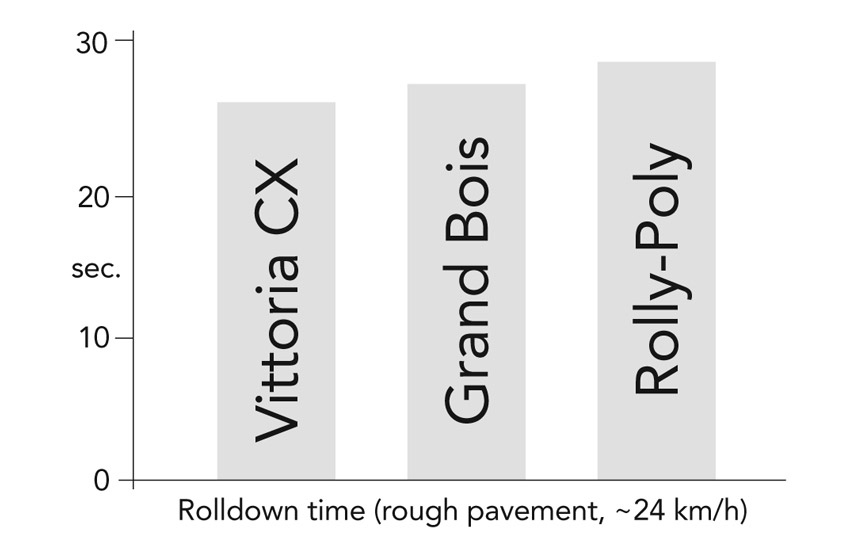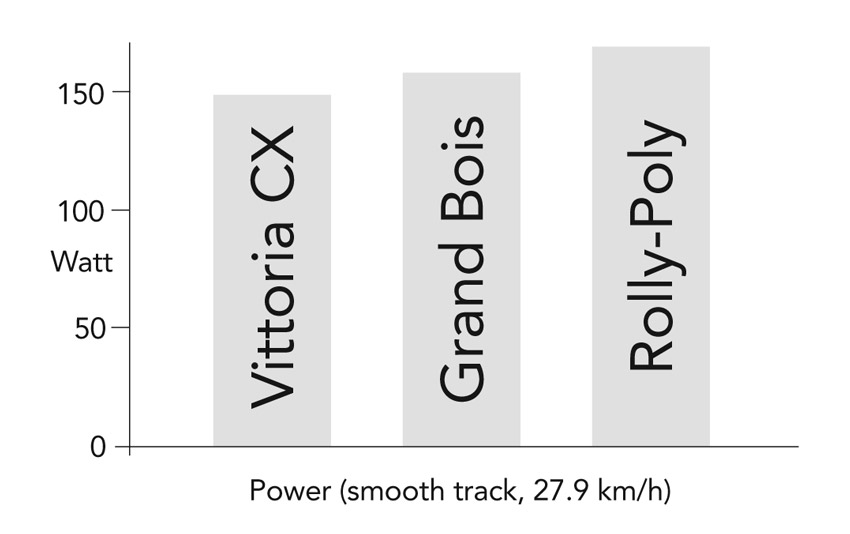How much faster are supple tires?

Improving your tires can make the biggest impact in the speed of your bike (apart from changing the motor!). The difference is especially pronounced for slower riders, whose wind resistance is less than that of faster riders.
Most cyclists know that supple tires make you faster on your bike. But so do ceramic bearings in your derailleur pulleys. The important question is: “How much faster?” For ceramic bearings, the difference is too small to notice on the road, because standard ball bearings already have close to zero resistance.
For supple tires, the difference is much greater. If you have a hard time staying with a group, changing your tires to a faster model may help you avoid getting dropped. And if you get close to the time limit in brevets, faster tires can provide you with a significant time cushion, so that a flat tire or a slight detour due to misreading the route sheet no longer results in a DNF.
Here is a comparison between three tires from Bicycle Quarterly‘s tire tests. These are all marketed as performance tires, and none of them have puncture-proof layers that would further slow them down.
- Vittoria Open CX Corsa 700C x 25 mm
- Grand Bois Cyprès (standard casing) 700C x 32 mm
- Rivendell Rolly-Poly 700C x 27 mm

Our first tests were rolldown tests on relatively rough pavement, like you typically find on American backroads. The speed was between 23 and 25 km/h (13.5 – 15.5 mph).
On this surface, the fastest tire rolls 13.5% faster than the slowest. That is a huge difference. Imagine going 15 mph with the slower tire, and on your next ride, after changing your tires, riding at 17 mph with the same effort. During a century ride, you’d be 45 minutes faster!

We also tested these (and many other) tires on a very smooth asphalt surface at constant speed with a Power Meter. The speed was higher (27.9 km/h; 17.3 mph), and the ultra-smooth surface reduced the vibrations. However, even under these “ideal” conditions, the rider on the slowest tire had to put out 13.5% more power to keep up with the rider on the fastest tire. That can make the difference between “hanging with a group” and getting dropped within a few miles.
If you calculate the speed difference for the same power output, it’s 5%. (Wind resistance going up exponentially with speed, so you need 13.5% more power to increase your speed by 5% to stay with the rider on the faster tires.)
As you can see, supple tires make the greatest difference on rougher surfaces, and at lower speeds. But even at high speeds, make the largest difference in the performance of your bike. For comparison, aero wheels make you about 1% faster. And when you are drafting, your wind resistance goes down, so rolling resistance becomes even more important. That is why the pros always have ridden supple tires.
Does this mean we all should ride Vittoria CX tires? Not exactly. The CX is optimized for ultimate performance, and it has a very thin tread. This means it will wear out quickly and suffer more punctures on the way. If you are racing or riding a timed event, these compromises may be worth making. For everyday use, it often makes sense to give up some speed to obtain twice as much service life and fewer punctures.
The Grand Bois Cyprès is designed as an all-round tire. It has a thicker tread that will last thousands of miles. It will get faster as it wears. The Grand Bois also has a sturdier casing that resists sidewall cuts better. As a result, it rolls a little slower. (Disclosure: Compass Bicycles sells Grand Bois tires.)
The Rivendell Rolly-Poly has an ultra-tough casing that provides peace of mind when you ride through debris and are afraid of cutting your tire’s sidewalls. This may be overkill for most riders. The more rigid casing slows the tire down significantly.

When we designed our Compass tires, we started with the Grand Bois tires, and then optimized the performance further, without making the tires into “event” tires that are not very suitable for everyday riding. We reduced the tread thickness on the shoulders of the tire, where it does not wear out, but kept it the same in the middle, where it wears.
For the Extralight models, we used a casing that is significantly more supple than the “standard” casing shown in the test results above. We haven’t measured the performance under controlled conditions yet, but our (and others’) on-the-road experience suggests that they are significantly faster than the standard models.
Tires really make a big difference. When I switched from tires with stiff sidewalls to supple ones, not only did I set many personal bests on long rides, but I also found that I could rest while drafting, whereas before, I was working hard just to hang on.
Take our Flèche team in the photo at the top: If one of us had significantly slower tires than the others, he would have to be much stronger just to keep up. We’d rather have the stronger rider take longer pulls at the front!

What if you don’t care about speed? Supple tires also are much more comfortable. And they just feel different, making cycling much more fun. To me, that is the most important difference, and why I ride them on all my bikes.
Further reading:
- Click here to find out more about Compass and Grand Bois tires.
- Bicycle Quarterly tire tests: Vol. 5, No. 2; Vol. 11, No. 3; Vol. 12, No. 3.


